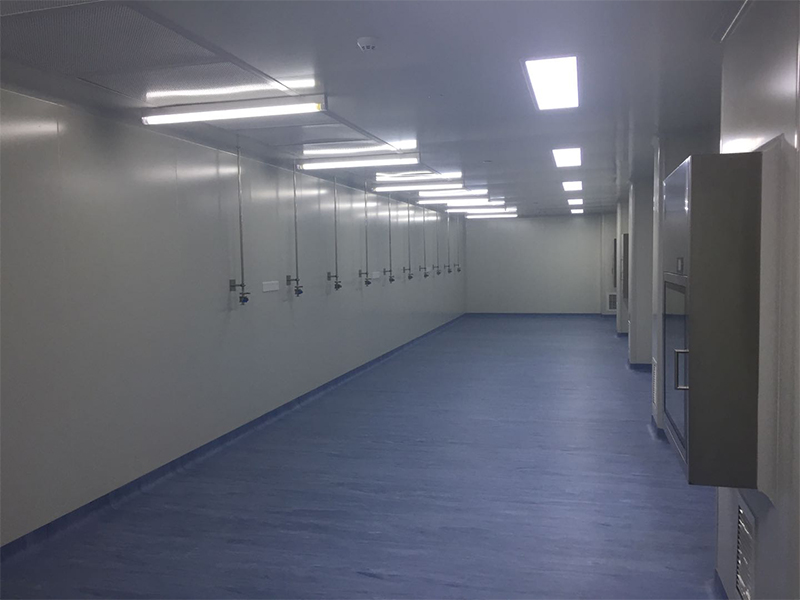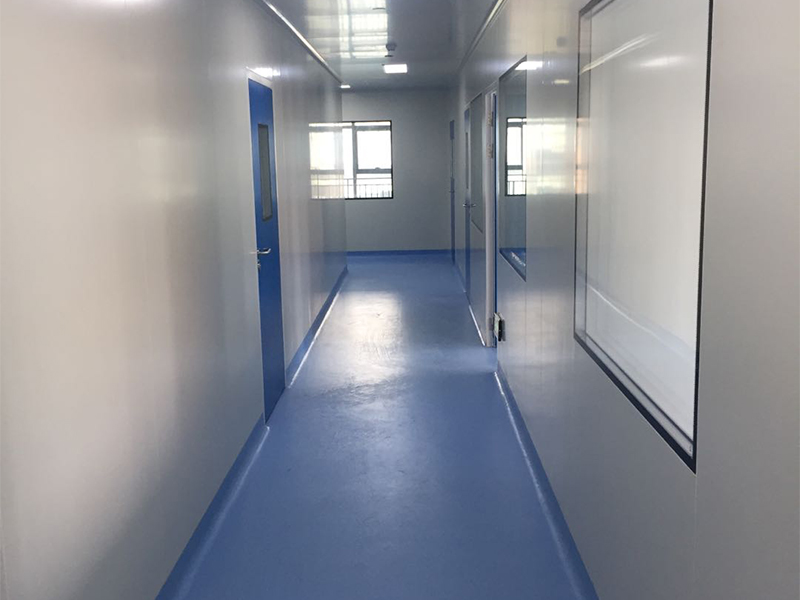

A clean room refers to a well-sealed space where parameters such as air cleanliness, temperature, humidity, pressure, and noise are controlled as needed. Clean rooms are widely used in high-tech industries such as semiconductors, electronics, pharmaceuticals, aviation, aerospace, and biomedicine. According to the 2010 version of GMP, pharmaceutical industry divides clean areas into four levels: A, B, C, and D based on indicators such as air cleanliness, air pressure, air volume, temperature and humidity, noise, and microbial content.
Class A clean room
Class A clean room, also known as class 100 clean room or ultra-clean room, is one of the cleanest clean room. It can control the number of particles per cubic foot in the air to less than 35.5, that is, the number of particles greater than or equal to 0.5um per cubic meter of air cannot exceed 3,520 (static and dynamic). Class A clean room has very strict requirements and require the use of hepa filters, differential pressure control, air circulation systems, and constant temperature and humidity control systems to achieve their high cleanliness requirements. Class A clean room is high-risk operating areas. Such as filling area, area where rubber stopper barrels and open packaging containers in direct contact with sterile preparations, and area for aseptic assembly or connection operations. Mainly used in microelectronics processing, biopharmaceuticals, precision instrument manufacturing, aerospace and other fields.
Class B clean room
Class B clean room is also called Class 100 clean room. Its cleanliness level is relatively low, and the number of particles greater than or equal to 0.5um per cubic meter of air is allowed to reach 3520 (static) 35,2000 (dynamic). Hepa filters and exhaust systems are used to control the humidity, temperature and pressure difference of the indoor environment. Class B clean room refers to the background area where class A clean area for high-risk operations such as aseptic preparation and filling is located. Mainly used in biomedicine, pharmaceutical manufacturing, precision machinery and instrument manufacturing and other fields.
Class C clean room
Class C clean room is also called class 10,000 clean room. Its cleanliness level is relatively low, and the number of particles greater than or equal to 0.5um per cubic meter of air is allowed to reach 352,000 (static) 352,0000 (dynamic). Hepa filters, positive pressure control, air circulation, temperature and humidity control and other technologies are used to achieve their specific cleanliness standards. Class C clean room is mainly used in pharmaceutical, medical device manufacturing, precision machinery and electronic component manufacturing and other fields.
Class D clean room
Class D clean room is also called class 100,000 clean room. Its cleanliness level is relatively low, allowing 3,520,000 particles greater than or equal to 0.5um per cubic meter of air (static). Ordinary hepa filters and basic positive pressure control and air circulation systems are usually used to control the indoor environment. Class D clean room is mainly used in general industrial production, food processing and packaging, printing, warehousing and other fields.
Different grades of clean rooms have their own scope of application and are selected and used according to actual needs. In practical applications, environmental control of clean rooms is a very important task, involving comprehensive consideration of multiple factors. Only scientific and reasonable design and operation can ensure the quality and stability of the clean room environment.


Post time: Jun-27-2025

